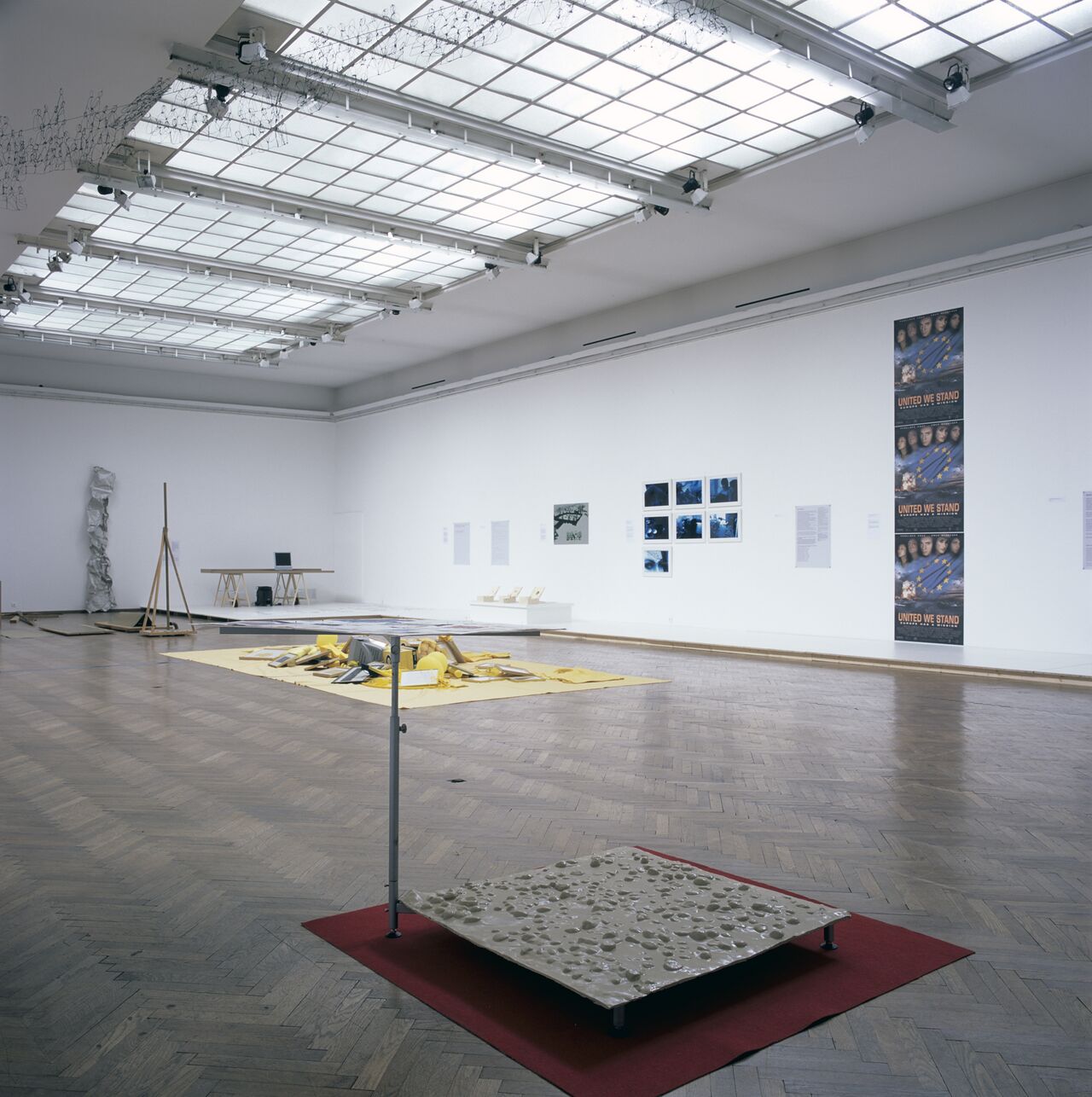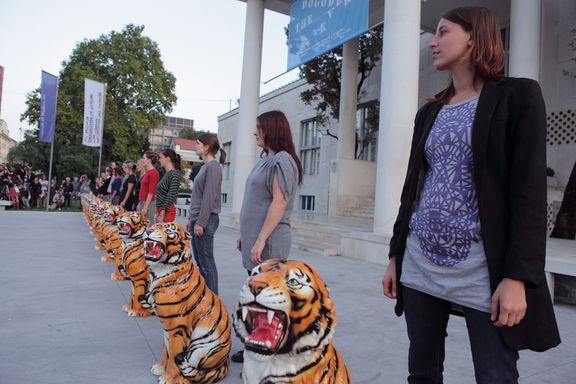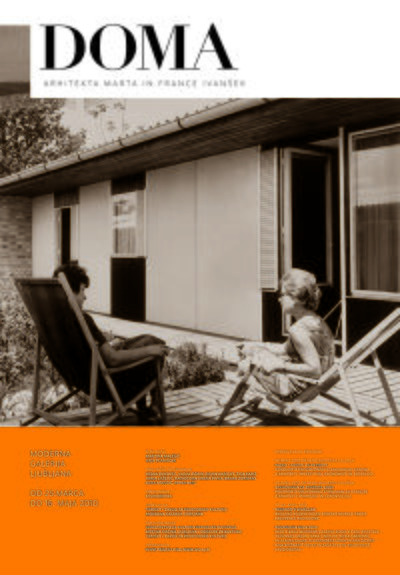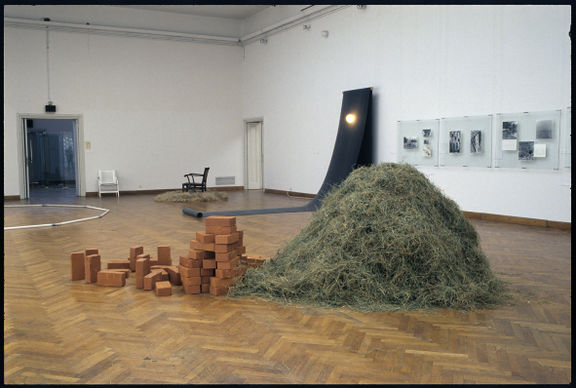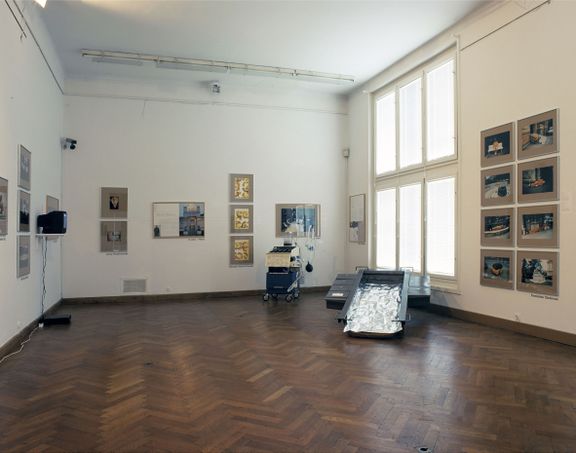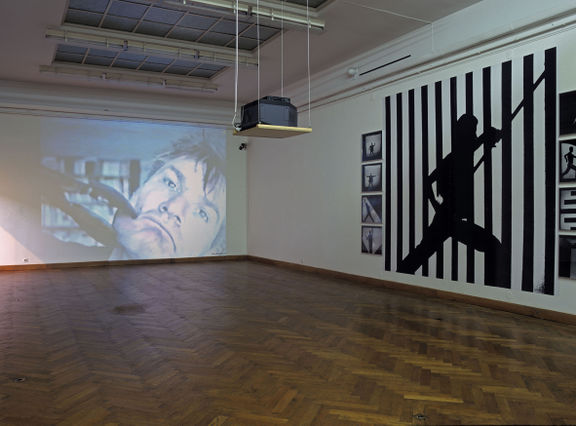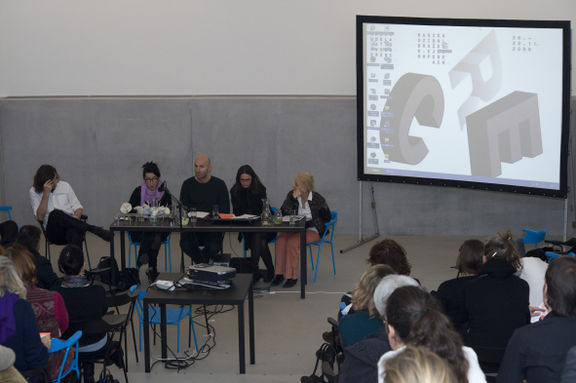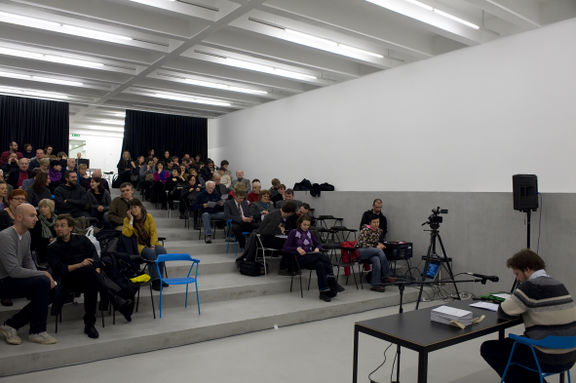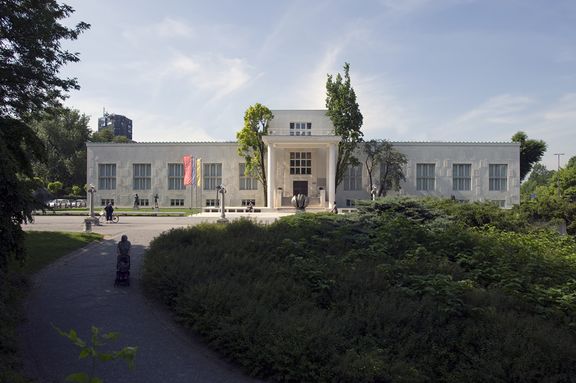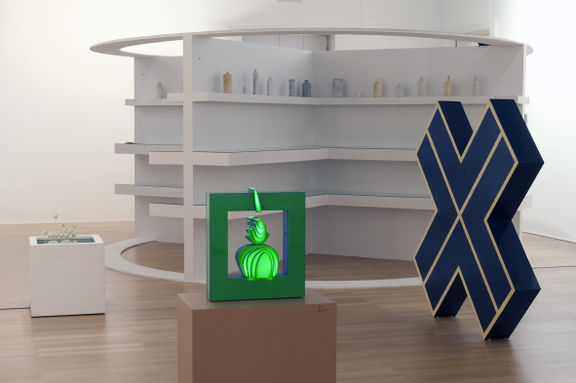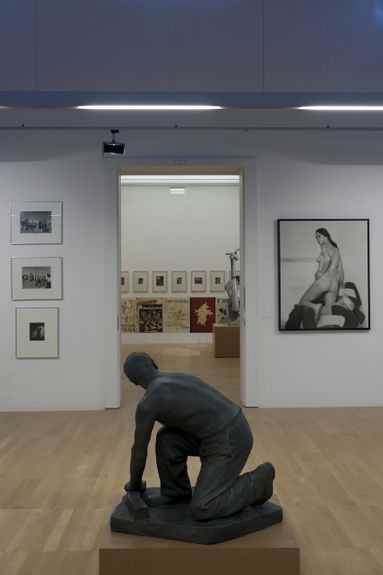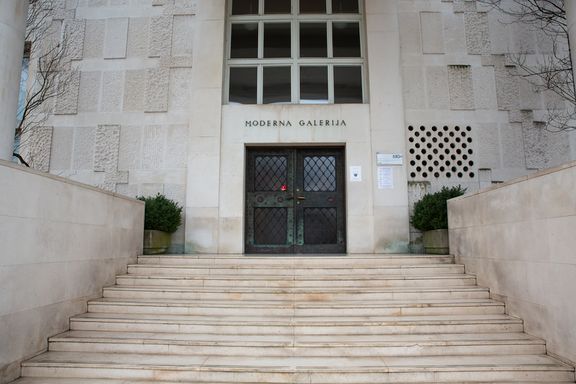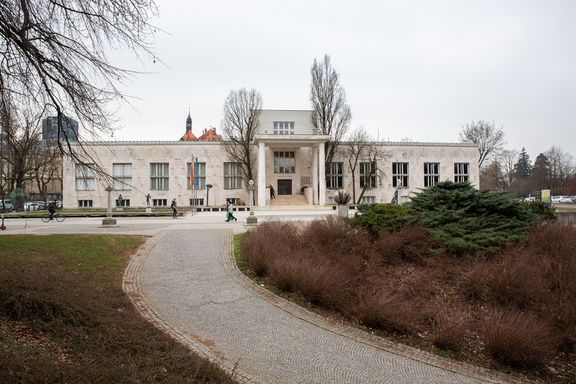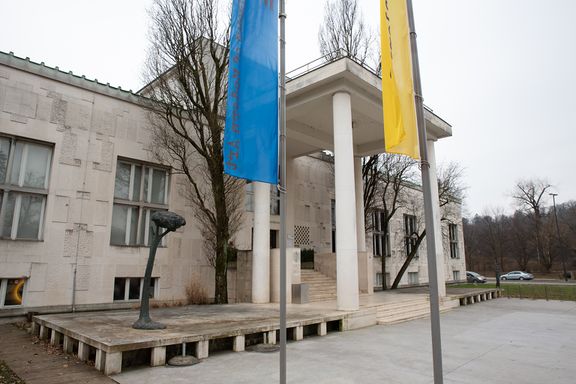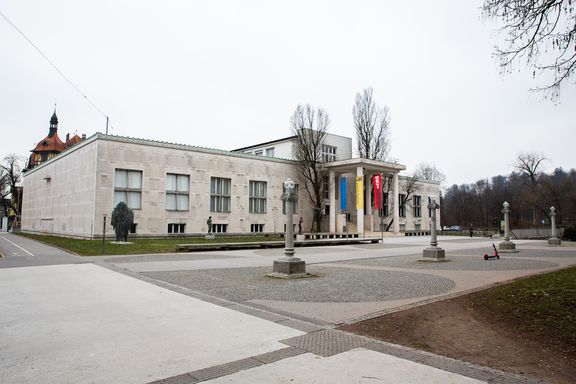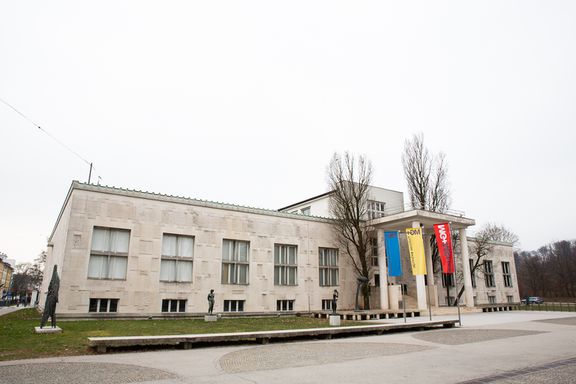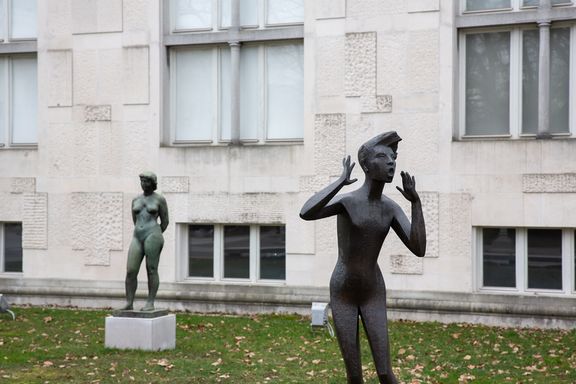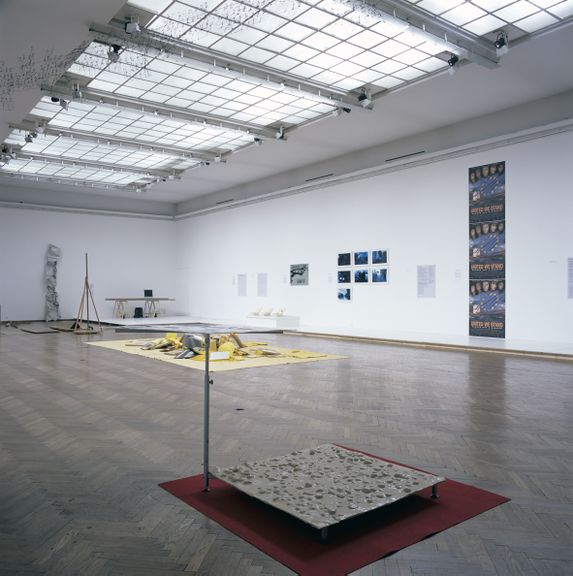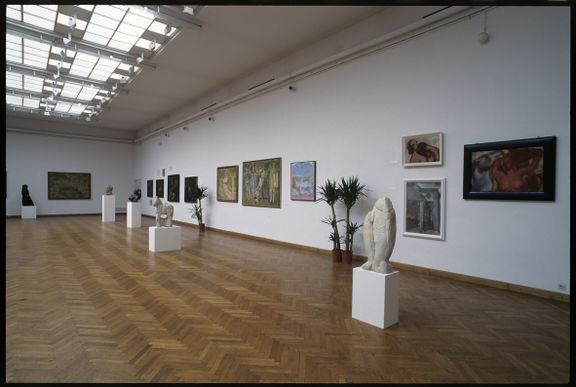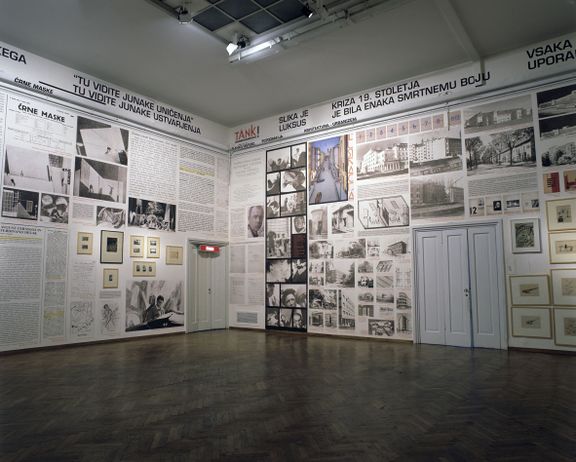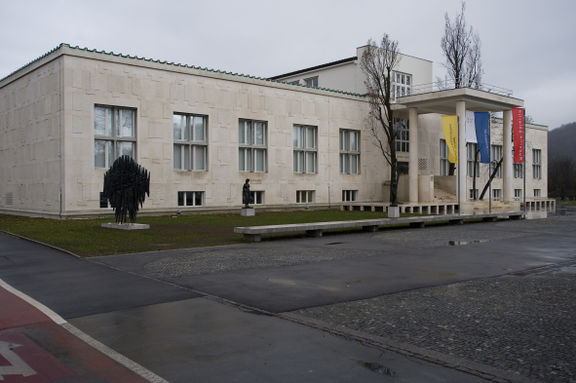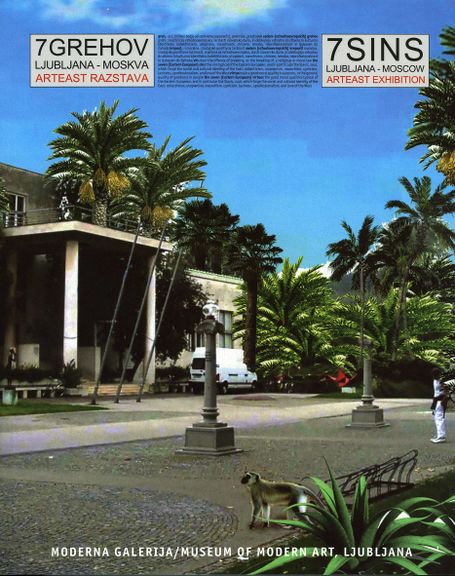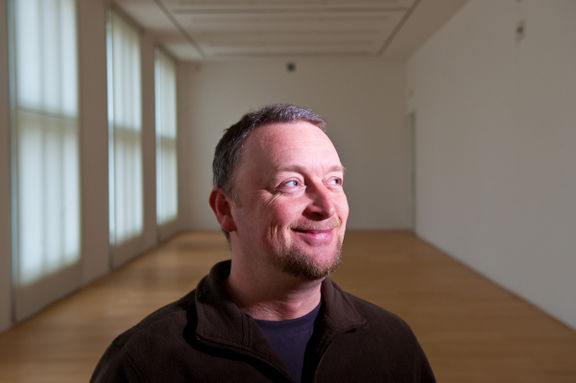Moderna galerija (MG)
-
3 Dec 2018
A lecture/panel with art historian Beti Žerovc (Faculty of Arts, University of Ljubljana) entitled Learning from Yugoslavia in the frame of the exhibition Toward a Concrete Utopia: Architecture in Yugoslavia, 1948–1980
History
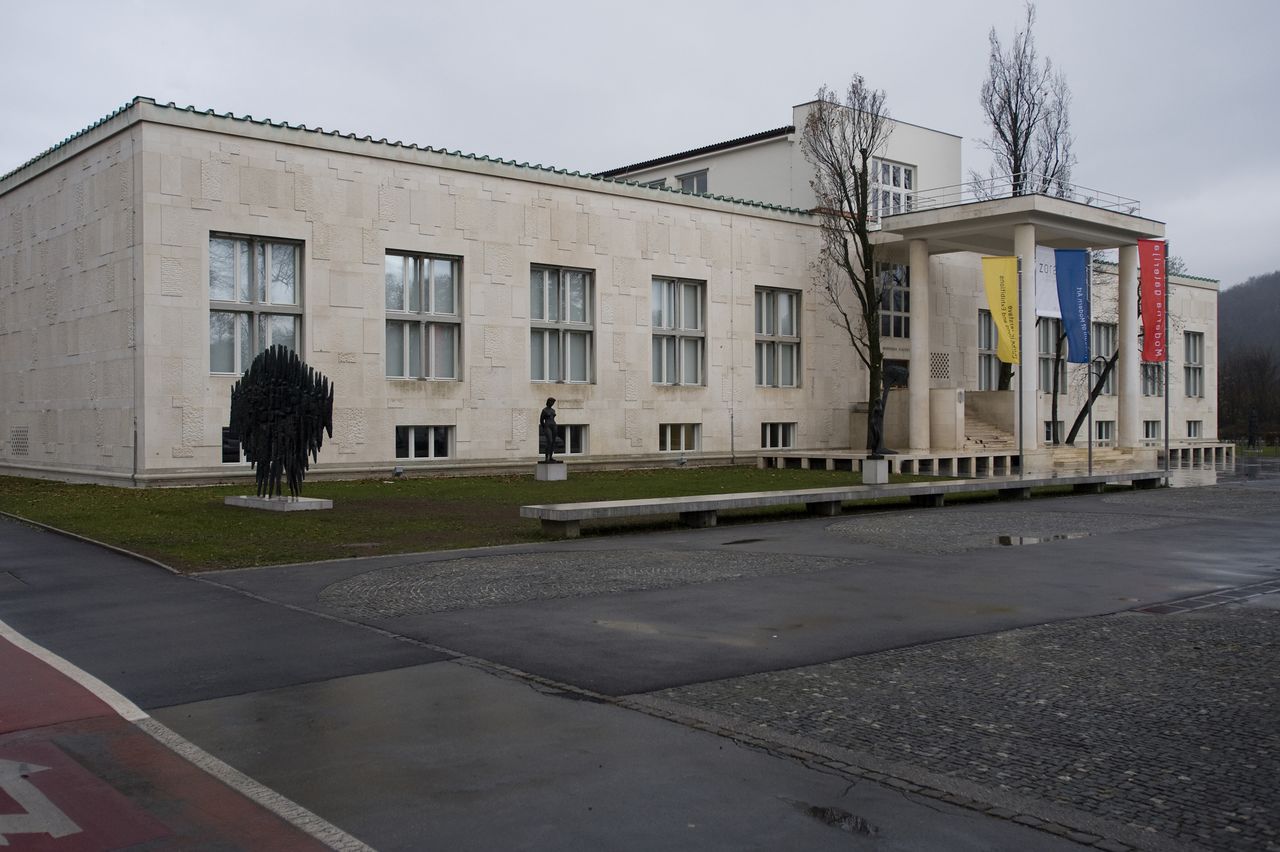 Museum of Modern Art, Ljubljana
Museum of Modern Art, Ljubljana
The museum was initiated by the art historian, critic, writer, and diplomat Izidor Cankar, following the receipt of a generous grant from the heirs of industrialist Dragotin Hribar. Designed by architect Edvard Ravnikar (1907–1993) in the 1930s – before his studies in Paris with Le Courbusier, when he still followed the classicist principles of Jože Plečnik – construction on the museum was halted during WWII, leading to its official opening in 1948.
Over the years Moderna galerija has presented numerous important exhibitions, many of which have been pivotal in the development of Slovene art. These have included the Slovene Impressionists exhibition of 1949, which constituted an important victory over extreme ideological dogma; the exhibition of Riko Debenjak and Stane Kregar of 1953, which brought abstract art to a wider audience; the Henry Moore exhibition of 1955, which gave powerful stimulus to modernist tendencies; and the first Ljubljana International Biennial of Graphic Art of the same year, which spurred the inception of numerous biennials around the globe.
Collections
In addition to studying, collecting, and presenting 20th-century Slovene art, Moderna galerija is responsible for maintaining and constantly developing the national collection of 20th-century and 21st-century Slovene art. Moderna galerija's holdings in 2009 included: 502 sculptures, 1,301 paintings, 3,079 prints by Slovene and foreign artists, 11,069 drawings, and approximately 2,000 photographs, as well as some representative works of new media art and Video, and Internet projects.
Permanent collection
The permanent collection of Moderna galerija is currently in an installation process. Before the renovation it was staged through four rooms, each had its focus: Room 1 featured the beginnings and development of Modernist forms in Slovene art since the early 1950s, with a special focus on the traditions of the Intimist and the fantastic figurative art in Slovenia. Room 2 presented Modernist art from the 1950s and 1960s, both abstract and figurative. Room 3 presented works from the late 1960s, 1970s and 1980s, beginning with examples of new figurative art, geometric abstraction and avant-garde works, continuing with "primal" and "fundamental" abstract works from the mid-1970s and concluding with Neo-Expressionist and New Image art from the first half of the 1980s. Finally, Room 4 focused on contemporary artistic creativity from the past decade, featuring pieces by several internationally-acclaimed Slovene artists of the younger generation, including Jože Barši, Mirko Bratuša, Vuk Ćosić, Bojan Gorenec, Tomaž Gregorič, Irwin, Bogoslav Kalaš, Žiga Kariž, Dušan Kirbiš, Marko Kovačič, Neue Slowenische Kunst, Marko Peljhan, Tadej Pogačar and the P.A.R.A.S.I.T.E. Museum of Contemporary Art (PMCA), Marjetica Potrč, Zora Stančič, Apolonija Šušteršič, Lujo Vodopivec, VSSD and Žarko Vrezec.
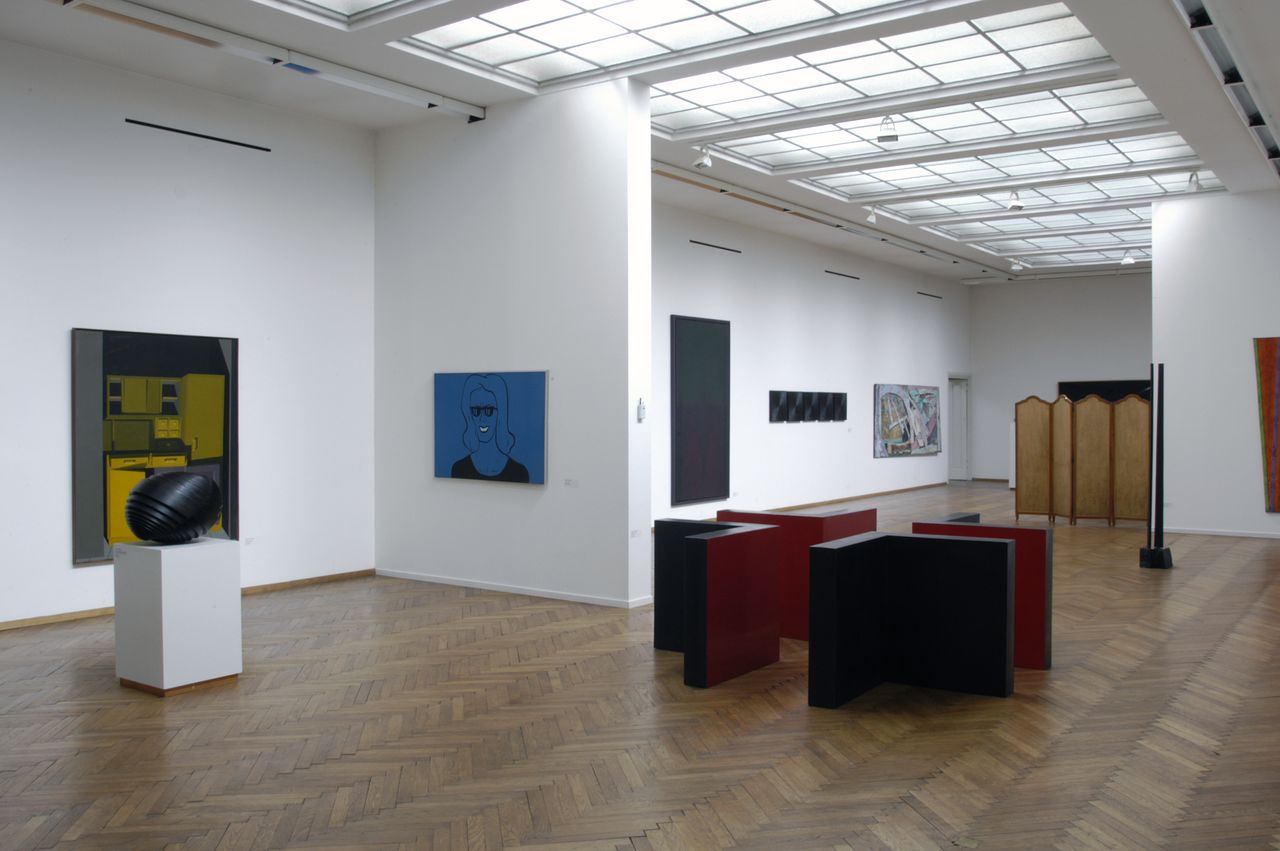 Installation view of Selected Works of Slovene Artists from the Museum of Modern Art Collections 1950-2000, Permanent Display, 2001-2006
Installation view of Selected Works of Slovene Artists from the Museum of Modern Art Collections 1950-2000, Permanent Display, 2001-2006
Photography collection
Since 1991 Moderna galerija has also collected photographs by Slovene photographers from the period between the two world wars, works by contemporary Slovene photographers, and works by some international photographers who have exhibited at the Moderna galerija (Thierry Girard, Timo Kelaranta, Cesare Pietroiusti, Armin Linke, Andres Serrano). Because of their importance and quantity, the works of Fran Krašovec (1892–1969), considered the pioneer of modern photography in Slovenia, represent a large part of the collection.
New media collection
A collection of new media art is currently taking shape through the acquisition of video works, films, moving images installations, and Internet projects. It already comprises representative works that are good examples of the development of media art in Slovenia and presents, despite their relatively small number, a varied picture in terms of generation, expression, and technological approach.
In 2010 Moderna galerija recieved the entire e-flux video rental (EVR) collection as a donation. EVR is a project by Anton Vidokle and Julieta Aranda, comprised of a video rental store, a public screening room, and a film and video archive with over 1000 works by 500 international artists. They have been selected since 2004 by over 100 curators from all over the world.
International collections
In the 1990s Moderna galerija began to assemble its international collection Arteast 2000+, a collection of works mainly by Eastern European artists. Its goals are to present Eastern European art, which has been overlooked until now, to establish a dialogue between Eastern and Western European artists and in this way create a new, different view on the development of art in the second half of the 20th century.
Another line of the international collection of the gallery is comprised of art works from the 1990s: Miroslaw Balka, Pedro Cabrita Reis, Cristina Iglesias, Anish Kapoor and Ulf Rollof and others. The third line of the Moderna galerija international collection contains 136 works of 20th-century artists from the territories of former Yugoslavia, including important works by artists such as Jovan Bijelić, Dušan Džamonja, Oton Gliha, Ljubo Ivančić, Frano Kršinić, Petar Lubarda, Nikola Martinoski, Ivan Meštrović, Pedja Milosavljević, Miroslav Šutej, and Vladimir Veličković.
Programme
In addition to its role as the Museum of Modern Art, Moderna galerija also functions as a temporary exhibition gallery which hosts survey or retrospective exhibitions of works by key Slovene artists of the 20th century, as well as exhibitions of contemporary domestic and international art.
Recently, the significance of the international exhibition programme in the work of the Moderna galerija has grown considerably and major names in the contemporary world art are regularly presented in individual and group exhibitions like Body and the East – From the 1960s to the Present (1998), Form Specific/Arteast Exhibition (2003), 7Sins: Ljubljana – Moscow (curated by Zdenka Badovinac, Victor Misiano, and Igor Zabel), or Interrupted Histories (2006). Since 1994 Moderna galerija organises the U3 Triennial of Contemporary Slovene Arts.
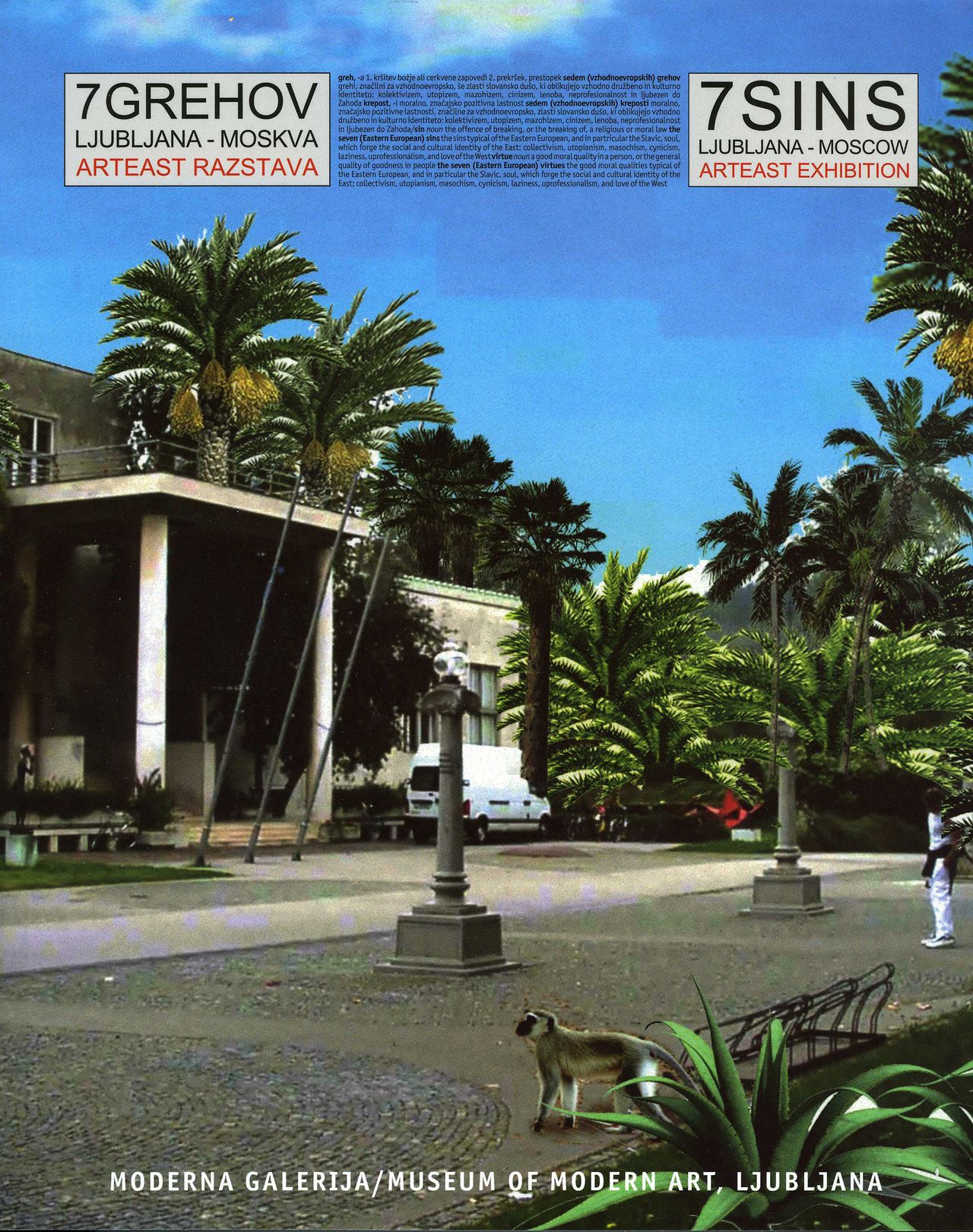 7 sins - Ljubljana – Moscow exhibition catalogue cover, Museum of Modern Art, 2004
7 sins - Ljubljana – Moscow exhibition catalogue cover, Museum of Modern Art, 2004
During the renovation of Moderna galerija (December 2007 – April 2009) the project Hosting MG! was accomplished on 20 locations around Slovenia. Different kind of activities aimed to mitigate the negative effects of the suspension of the gallery's activities in Slovenia. The project was also a kind of appeal to institutions and individuals working in the field of contemporary art to establish a networking platform to facilitate easier communication and collaboration.
Other activities
Moderna galerija incorporates a Modern Art Archive which collects, processes, and publishes documentary and archival material relating to modern and contemporary Slovene art. It also runs a library which collects books, catalogues, and all other relevant publications.
Finally, Moderna galerija performs an important educational function which includes lectures, screenings, guided tours, and workshops. It is increasingly involved in work with pre-school children and with students in primary and secondary schools.
The auditorium hosts various public presentations, festivals, symposia, conferences, and workshops organised either by Moderna galerija or other producers such as the Igor Zabel Association for Culture and Theory or the Institute for Sonic Arts Research.
International cooperation
Apart from the international character of its programme and collections, Moderna galerija and its staff participate also in joint projects and platforms. For the period 2010–2013 Zdenka Badovinac was elected president of the CIMAM – International Committee of ICOM for Museums and Collections of Modern Art.
In 2009 Moderna galerija cofounded L'Internationale, a trans-institutional organisation of five European museums and artists' archives (Július Koller Society from Bratislava, MACBA from Barcelona, VAM from Eindhoven, and M HKA from Antwerpen) with the aim to "to challenge common canons and dominant narratives of art history." In the same year Moderna galerija also joined the Digitizing Ideas: Archives of Conceptual Art Practice, an EU project led by the Museum of Contemporary Arts Zagreb.
Since the inception of the Radical Education Collective in 2006, Bojana Piškur, a curator from Moderna galerija, coorganises or participates in events dedicated to learning knowledge "on the social and political responsibility of the researchers by experiencing it through the process of political self-emancipation".
As a partner in the EU project Gravity – Art, Religion, Science (2003–2005) Moderna galerija realised an innovative bilingual online archive Towards Zero Gravity. Gravity in Slovene Fine Art in the 20th and 21st Centuries conceived by Igor Zabel and facilitated by the Modern Art Archive.
See also
- Museum of Modern Art Library
- Modern Art Archive, Museum of Modern Art
- Mala Gallery, Museum of Modern Art
- U3 Triennial of Contemporary Slovene Arts
- MJ Manifesta Journal
- Igor Zabel Association for Culture and Theory
External links
- Moderna galerija website
- Arteast 2000+ permanent collection website
- Moderna galerija Ljubljana on Facebook
- Moderna galerija Blog with recorded lectures
Projects
- U3 2010 lectures and virtual tour
- L'Internationale project website
- Museum of Parallel Narratives exhibition at MACBA, Barcelona
- The Next Step International Conference of Museums of Modern and Contemporary Art (2009) on VideoLectures.Net portal
- Towards Zero Gravity online archive
References
Gallery
- Articles maintained by Maja Škerbot
- HAS IMAGE
- Visual arts
- Photography
- Video
- New media art
- Architecture
- Museums
- Visual arts museums
- Festival organisers
- Architecture exhibition organisers
- Exhibition organisers
- Producers
- Visual arts producers
- Bookshops
- Collections
- Venues
- Galleries
- Visual arts venues
- Visual arts publishers
- Publishers
- Comic art
- New media art venues
- Cafés



